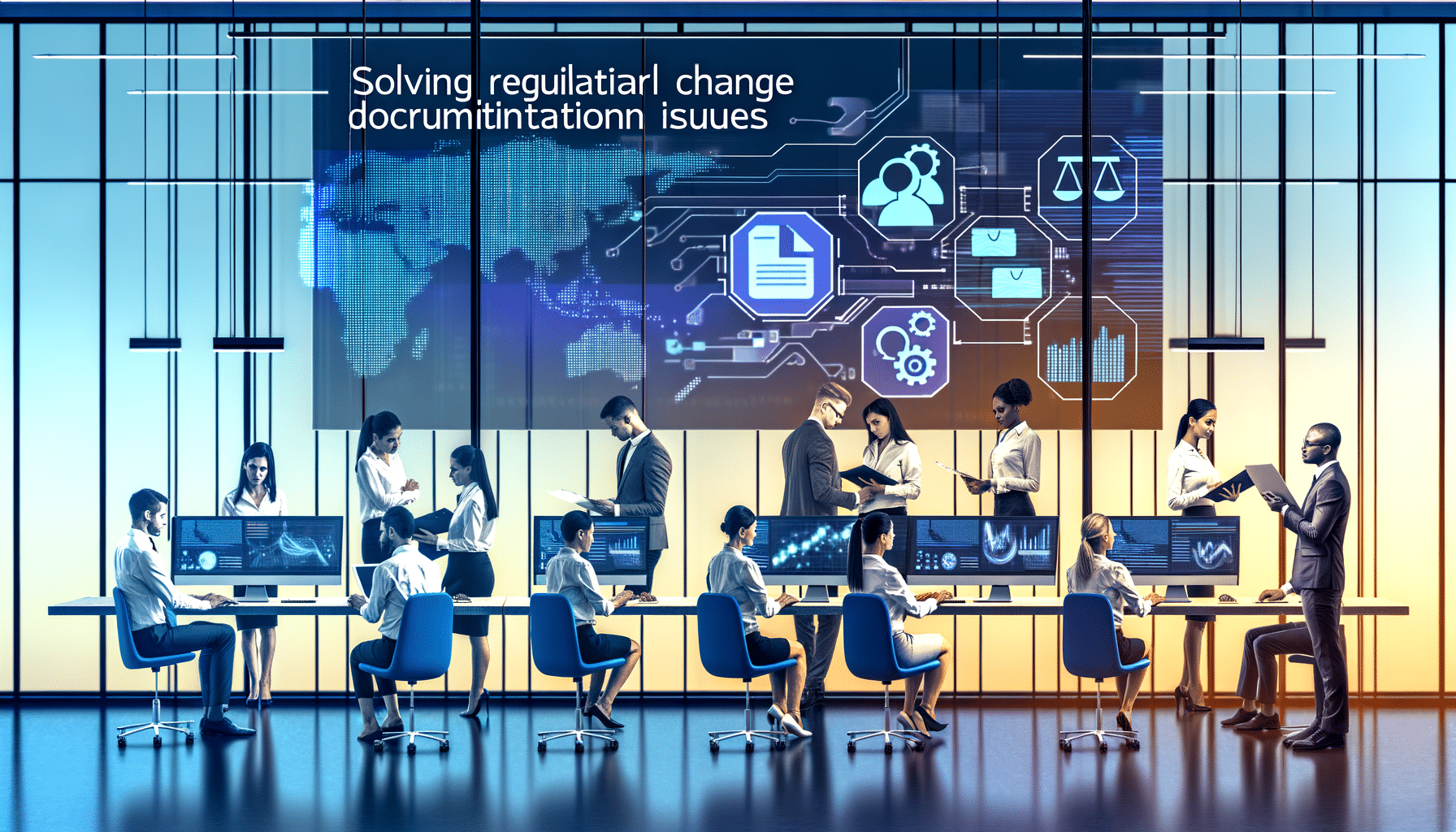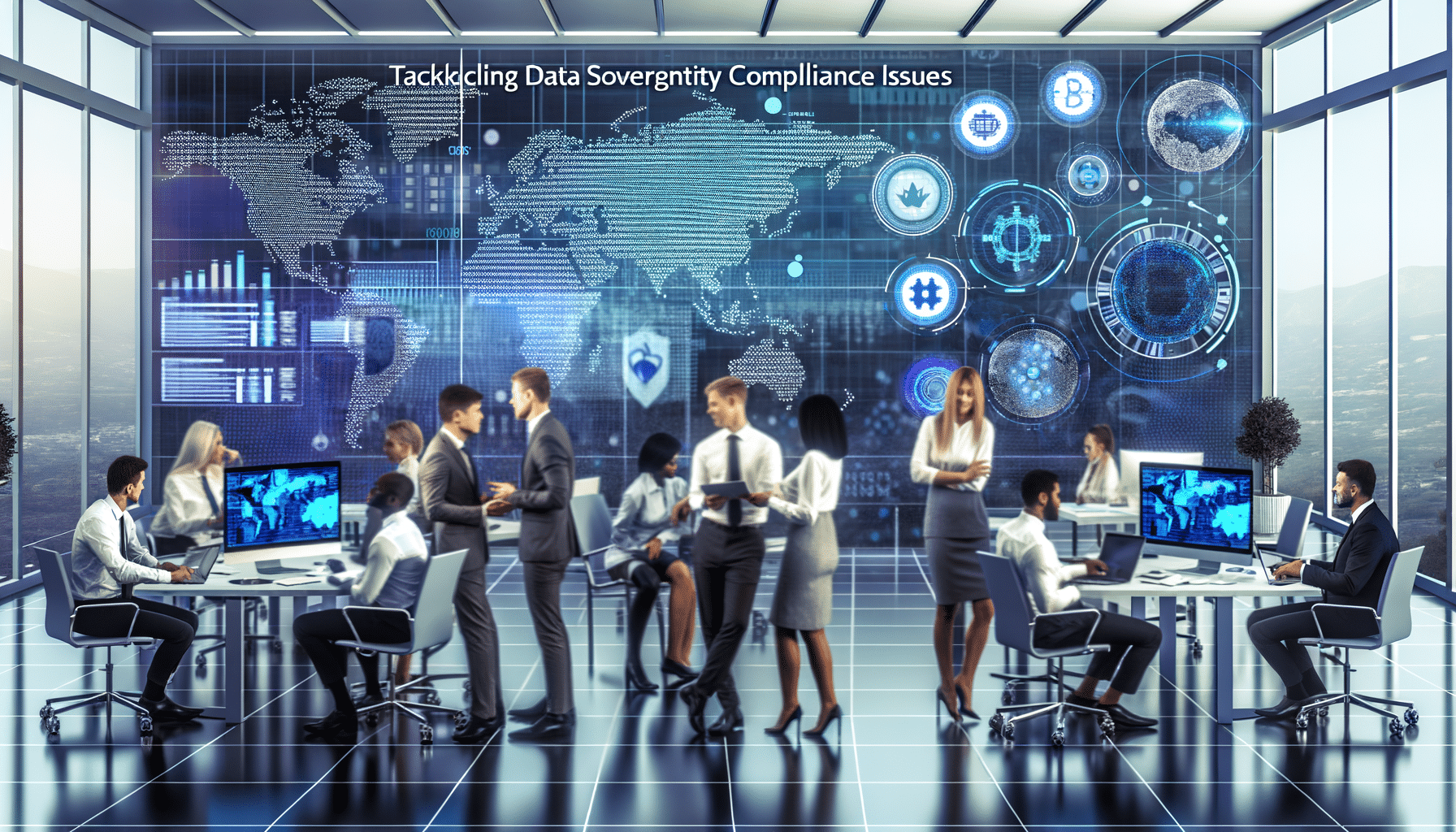- Regulatory
- November 16, 2024
Solving Regulatory Change Documentation Issues

As someone who has navigated through the intricate world of record management, I’ve witnessed firsthand the challenge that regulatory change documentation poses to businesses and organizations. It’s a labyrinth of rules, amendments, and compliance mandates, which, if not managed properly, can turn into a significant liability rather than an asset.
Understanding the Complexity of Regulatory Change Documentation
Navigating regulatory frameworks has always been a substantial challenge. With regulations constantly evolving, managing change documentation efficiently is critical. These changes span across industries and sectors, from GDPR in Europe to HIPAA in the health sector across the United States, demanding constant vigilance and adaptation.
However, the issue lies not just in keeping up with these changes but also in ensuring clear documentation and adherence to new standards. This often proves to be cumbersome, requiring dedicated personnel and resources. The traditional methods, involving manual updates and physical records, are woefully inadequate in the face of these dynamic demands.
The Power of Artificial Intelligence in Automating Regulatory Compliance
Embracing automation through AI has been nothing short of revolutionary in this domain. AI-driven technologies bring about a paradigm shift by automating the classification and tracking of regulatory changes. They not only streamline these processes but also enhance accuracy and efficiency.
With AI, the continuous monitoring of regulatory updates becomes a seamless operation. By using algorithms trained to identify, categorize, and prioritize regulatory changes, organizations can ensure timely and compliant documentation. This intelligent automation saves valuable time and resources, allowing compliance teams to refocus their efforts on strategic planning rather than routine chores.
How RecordsKeeper.AI Transforms Change Documentation Management
Our SaaS platform, RecordsKeeper.AI, is at the forefront of reinventing how regulatory changes are managed. The key features designed into our solution are perfectly tailored to tackle the various facets of regulatory compliance:
- Automated Categorization & Retrieval: Our AI tools automatically sort and flag regulatory changes, establishing a robust system that makes information retrieval effortless through intuitive queries.
- Compliance Management: By automating regulatory workflows, we help ensure adherence to critical standards, be it GDPR, HIPAA, or SOX. This takes the guesswork out of the equation and ensures no regulation is overlooked.
- Audit Logs & Reports: Maintaining precise logs of activities and generating audit-ready reports ensures that users are always prepared, meeting both internal and external audit requirements with ease.
- Blockchain Integration: Our blockchain technology provides an additional layer of security, guaranteeing data integrity with tamper-proof records that are both verifiable and immutable.
These features not only improve document accuracy but also reinforce security, providing peace of mind that the records are protected against unauthorised alterations.
Real-World Application: A Competitive Advantage
The transition from manual to automated systems is not just a technological upgrade; it’s a strategic advantage. Organizations equipped with automated regulatory change documentation systems are better positioned to respond swiftly to new compliance demands and regulatory audits. These advantages lend well to increased trustworthiness in the eyes of partners, clients, and, most importantly, regulatory bodies.
Moreover, the integration of AI in record management minimizes human error, drastically reducing the odds of non-compliance fines and penalties, thereby shielding organizations from costly repercussions and reputational damage.
Your Next Steps Towards Compliance Excellence
Relying on outdated methods in today’s fast-paced world is not just risky—it’s a disservice to your organization. Investing in an AI-powered solution like RecordsKeeper.AI equips you with the tools and confidence to meet regulatory demands head-on.
I encourage compliance teams and organizational leaders to explore what RecordsKeeper.AI offers by scheduling a demonstration or consultation. Understanding our platform’s potential in your specific regulatory environment can be the transformative step towards achieving a streamlined, fully-compliant document management process.
By embracing this innovative approach, you’re setting your organization on a path of assured compliance and strategic growth. For more insights into navigating these crucial challenges, stay connected with me, as we continue to pioneer solutions in the world of regulatory compliance. The future of record management is here, and it’s time for your organization to embrace it.
Toshendra Sharma is the visionary founder and CEO of RecordsKeeper.AI, spearheading the fusion of AI and blockchain to redefine enterprise record management. With a groundbreaking approach to solving complex business challenges, Toshendra combines deep expertise in blockchain and artificial intelligence with an acute understanding of enterprise compliance and security needs.
Related Posts

Managing Complex Regulatory Documentation Requirements
Simplifying complex regulatory documentation with AI automation.
- November 16, 2024

Tackling Data Sovereignty Compliance Issues
Managing data sovereignty requirements with AI and blockchain.
- November 16, 2024
Archives
- January 2025
- December 2024
- November 2024
- October 2024
- September 2024
- August 2024
- July 2024
- June 2024
- May 2024
- April 2024
- March 2024
- February 2024
- January 2024
- December 2023
- November 2023
- October 2023
- September 2023
- August 2023
- July 2023
- June 2023
- May 2023
- April 2023
- March 2023
- February 2023
- January 2023
- December 2022
- November 2022
- October 2022
- September 2022
Want to get more content like this?
Signup to directly get this type of content to your inbox!!
Latest Post
Document Control for Equipment Maintenance
- January 20, 2025
Managing Records for Multiple Clients
- January 19, 2025
Handling Conference Documentation
- January 18, 2025
Setting Up Department Record Reviews
- January 17, 2025





